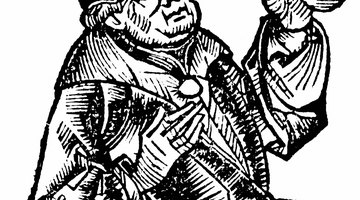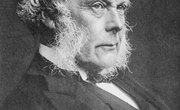In the Middle Ages, Islamic science and medicine was far more advanced than that of Europe because of access to ancient texts. Medieval Islamic doctors were greatly influenced by philosophers such as Hippocrates and Galen, as well as Indian physicians like Sushruta and Charaka. All of the following physicians were men who embodied the Western idea of a Renaissance Man: polymaths who were well-versed in varying studies and arts including calligraphy, philosophy, mathematics, music, literature, astronomy and law.
Ibn Sina 980-1037
Arguably the most famous Islamic physician who ever lived, Ibn Sina, known as Avicenna in the West, is most known for his encyclopedia, "The Canon of Medicine," which was the premier medical book in Europe for 600 years. He believed in observation and experimentation, which resulted in his identification of tuberculosis as a contagious disease. He was also the first physician to describe meningitis, assert that soil and water can spread disease, identify the different parts of the eye and prove that nerves create the sensation of pain.
Al Razi 865-925
Known in the West as Rhazes, Al Razi's fame is second only to that of Ibn Sina. He was the director of a hospital in Baghdad and one of the first people to record patients' symptoms and case histories. One of his greatest contributions to science was the discovery that measles and smallpox were two distinct diseases, whereas previously they had been thought to be different mutations of the same disease. He also composed many books on medicine. His most famous, a medical encyclopedia called "Al-Hawi," was the largest medical encyclopedia of its time.
Al Tabari 838-870
Like his peers, Al Tabari authored a famous encyclopedia of medicine called "Firdous al-Hikmat" or "Paradise of Wisdom." Unlike the previous two men, however, Al Tabari's encyclopedia remained relatively unknown in the West until recently because it wasn't translated until the 21st century. This encyclopedia consists of seven volumes and includes every known cure for every known disease at the time it was written. It was the first compendium of medical knowledge to include different branches of science, including psychology, with Al Tabari observing that simply talking to people about their troubles often helped them feel better.
Ibn al-Nafis 1213-1288
Born in Damascus, Ibn al-Nafis served in several hospitals in Cairo and is most well-known for his discoveries of how the circulatory system works. He believed that blood passed through the lung on its way in and out of the heart via a system of what he called "pores," which today are called pulmonary capillaries -- discovered 400 years later by Western physician Marcello Malpighi. Ibn al-Nafis made these discoveries by systematically challenging ancient Greek and Roman philosophies through logic. He is also the first person to define anatomy as its own study.
Related Articles
References
Writer Bio
Natasha Brandstatter is an art historian and writer. She has a MA in art history and you can find her academic articles published in "Western Passages," "History Colorado" and "Dutch Utopia." She is also a contributor to Book Riot and Food Riot, a media critic with the Pueblo PULP and a regular contributor to Femnista.











